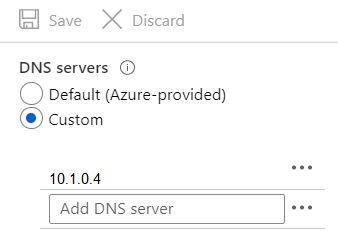

You have the Azure virtual machines shown in the following table.
A DNS service is installed on VM1.
You configure the DNS servers settings for each virtual network as shown in the following exhibit.
You need to ensure that all the virtual machines can resolve DNS names by using the DNS service on VM1.
What should you do?
mlantonis
Highly Voted 4 years, 1 month agofedztedz
Highly Voted 4 years, 6 months ago[Removed]
Most Recent 9 months, 1 week agotashakori
1 year, 3 months agodevops_devops
1 year, 5 months agoEmnCours
2 years, 10 months agoLazylinux
3 years agoEleChie
3 years agovalkyrieShadow
3 years, 2 months agora_aly
3 years, 3 months agoajayasa
3 years, 3 months agopappkarcsiii
3 years, 4 months agofabylande
3 years, 8 months agoAubinBakana
3 years, 10 months agobsdhjbfu3423asdfd
3 years, 12 months agoMack279
3 years, 10 months agoCloudyTech
4 years agoykmoh
4 years agoScreamingHand
4 years agod0bermannn
3 years, 11 months ago